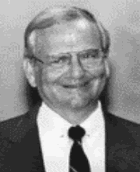Lee Iacocca or Lido Anthony Iacocca was born on October
25, 1924. (Lido would change his name to Lee after going to work for
Ford. He felt it would be easier for business associates and
contacts to recognize and understand.)

His parents, Nicola and Antoinette, were
Italian immigrants. Lee displayed his passion for hard work &
managerial ken at a very young age. When he was 10 years old, he
would take his wagon to the grocery store and wait outside. As
shoppers came out he would offer to pull their groceries home for
them for a tip. By the time he was 16, he worked 16 hours a day in a
fruit mart. Iacocca graduated from Lehigh University, Bethlehem,
Pa., in 1945 and received a master's degree in engineering from
Princeton University in 1946. Hired as an engineer by the Ford Motor
Company, he quickly proved that he was better suited for sales. It
was this shift that sparked an illustrious beginning for Iacocca and
ushered in monumental achievements for Ford. In a career that
spanned 21 years, Iacocca's maverick, street-smart, 'thinking on
your feet' approach induced breakthrough programmes at Ford. On the
strength of the 56-56, (this program made it possible to purchase a
new 1956 Ford for 20 % down and $56.00 a month for 3 years) an extra
75,000,000 cars were sold. Another legendary project that Lee
undertook was the Fairlane Committee, the end product of which was
the 1964 Mustang.
It was this project that put Iacocca on the
international platform and gave the world a glimpse of LeeÆs
business management style. His use of good marketing research data,
his willingness to listen to people & his readiness in taking
the risk of introducing a new product made him an endearing
character. All his qualities combined to make the Mustang a success
& he was soon being known as the Father of the
Mustang.
By the end of 1975 Lee began having trouble at Ford.
Most of this seemed to be a personality conflict between Henry Ford
II and Lee. The tension continued to escalate, and Lee was fired in
July of 1978. He didnÆt sit around for long. He joined forces with
Chrysler on November 2, 1978. It was no secret that Chrysler having
accumulated a huge inventory of low-mileage cars at a time of rising
fuel prices, faced bankruptcy. Iacocca appealed to the federal
government for aid, gambling that it would not allow Chrysler to
fail when the national economy was already depressed. Although his
request sparked intense debate over the role of government in a
market economy, Congress in 1980 agreed to guarantee $1,500,000,000
in loans if the company could raise another $2,000,000,000 on its
own. Iacocca responded by finding new sources of credit and by
trimming operations, closing plants, and persuading labour unions to
accept layoffs and wage cuts. He then shifted the company's emphasis
to fuel-efficient models and undertook an aggressive advertising
campaign that included personal appearances on television
commercials. By 1981 Chrysler showed a small profit, and three years
later it announced record profits of more than $2,400,000,000.
Iacocca became a national celebrity. His autobiography, Iacocca
(1984), and a second book, Talking Straight (1988), were
best-sellers. Iacocca retired as Chrysler's chief executive in
1992.
Source: www.emediaplan.com

